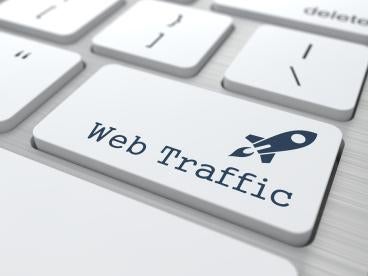COVID-19 and the many national lockdowns that have followed have caused a huge shift in advertising and marketing. Suddenly, everyone is at home and receiving nearly all content digitally; through their phones, tablets and TVs, and advertising budgets have been sliced and squeezed as companies shift scarce resources to other parts of their business.
Regulators are faced with a new challenge and responsibility to protect consumers from companies who would price gouge and profit from panic caused by COVID-19. The UK regulator, the Advertising Standards Authority (ASA), has published a fair number of decisions and guidance in relation to the coronavirus.
We provide a brief summary of relevant decisions and lessons for advertisers:
Be careful how you address life post-lockdown
In a recent decision by the ASA (see here), the ASA found that a commercial aircraft carrier’s ‘JAB AND GO’ advertisement was irresponsible and misleading. The advertisement invited consumers to buy their plane tickets for the Easter and Summer holidays because of the hopeful news of a vaccine roll out. The ASA received 2,370 complaints about the advertisement. In its decision, the ASA acknowledged the UK Government and other sources at the time were indicating that travel may be possible, but nevertheless found that the advertisement was misleading in relation to the impact of the vaccines and irresponsible for encouraging irresponsible behaviour.
Takeaway: Use caution when advertising events, goods and services that require travel or business restrictions to be lifted, and ensure that consumers are not misled.
Avoid medical and medicinal sounding claims about COVID-19
Claims to prevent, treat or cure the infection are likely to be considered ‘medical or medicinal claims’ and can only be used in relation to licensed products or appropriately marked medical devices. This applies to all products not just products you would associate with medicines. The ASA upheld a complaint against a facemask producer whose advertisement claimed ‘Protection against bacteria and viruses! ‘Coughs and sneezes spread diseases…’, stating that the producer did not have sufficient evidence to show that the face masks had been tested to, and met, PPE standards despite the face marks passing other conformity assessments.
Takeaway: Even if you have the necessary authorisations, never make a medical or medicinal sounding claims unless you have robust, independent substantiation to support a claim. Remember that claims can be visual in nature e.g. using a medical symbol could be taken as indicating that your product is medical in nature.
Take care with health-related claims
Only health claims listed as authorised in the EU Register, or claims that have the same meaning to the consumer may be used in marketing communications. The ASA upheld complaints against two food companies (see here and here) for their use of improper claims. Both companies made claims referring to the immune boosting properties of ingredients in their advertised products, one for vitamin C in its shot drink and the other in relation to gut bacteria in kefir yogurt.
Takeaway: Unless you have robust substantive evidence that your claim is justified and that it is listed on the EU Register, avoid all health-related claims.
Social responsibility & fear and distress
Advertisers must take care not to exploit public fear in order to mislead them into buying a product. An appeal to fear to encourage sensible behaviour or to discourage risky behavior may be considered justifiable.
However, in all circumstances the fear must not be excessive and exaggeration should be avoided at all times. The ASA ruled that an advertisement using the following language was likely to cause fear or distress:
“The death toll is 493 and rising. It would be an understatement to say that there is a growing sense of panic” and “the new virus is spreading so fast it has become barely controllable … any extra layer of protection is beneficial in order to decrease your chances of getting infected” (see here).
The ASA concluded that the advertiser was exploiting people’s fears in an inappropriate manner.
Takeaway: There is a delicate balance to be struck when utilising the coronavirus to motivate a sale, we recommend that a legal professional reviews the copy of each advertisement where this subject is included.
Using imagery in your advertising
In a statement in September 2020 (see here), the ASA was keen to stress the importance that all advertisements should depict current government and scientific rules and guidelines on measures designed to limit the spread of COVID-19. Although the ASA indicated that it would take a pragmatic approach, noting that many advertisements may have been created before certain guidelines were available.
Takeaways: The ASA provided three key points:
-
advertisements must not actively discourage protective measures such as mask wearing or social distancing
-
advertisements that make explicit reference to the Coronavirus must show the correct safety measures in line with current Government advice at the time the advert was created, and
-
advertisements that do not explicitly reference the Coronavirus may not need to depict coronavirus protective measures but should be made in a socially responsible manner.
Train your influencers
The importance of social media influencers as an effective method for reaching new customers and to generating authentic content for a brand is greater than ever during the pandemic. However, as can be seen in a number of recent ASA decisions, the ASA will uphold complaints against influencers on a range of channels, including TikTok (see here).
A brand will be deemed equally responsible for the influencer content; this can apply even if the brand had no editorial control. In a recent ruling, the ASA found that a short-term loan provider, who was using Instagram influencers to promote their delayed payment plans, was irresponsible for linking purchasing items as a way of boosting consumer’s low moods caused by COVID-19 (see here).
Takeaway: If you are going to engage with an influencer, ensure that you provide training and support so that the influencer understands what rules they must comply with and, ideally, vet all content before posting.
Conclusion
All advertisements must be created with social responsibility in mind, particularly during these times when consumers are particularly vulnerable. The ASA and other international regulators will take a very dim view of advertisers attempting to exploit the coronavirus through misleading consumers or relying on underhanded sales techniques. Accordingly, all businesses should take great care when making any direct or implied claims about coronavirus in advertising and marketing.




 i
i

